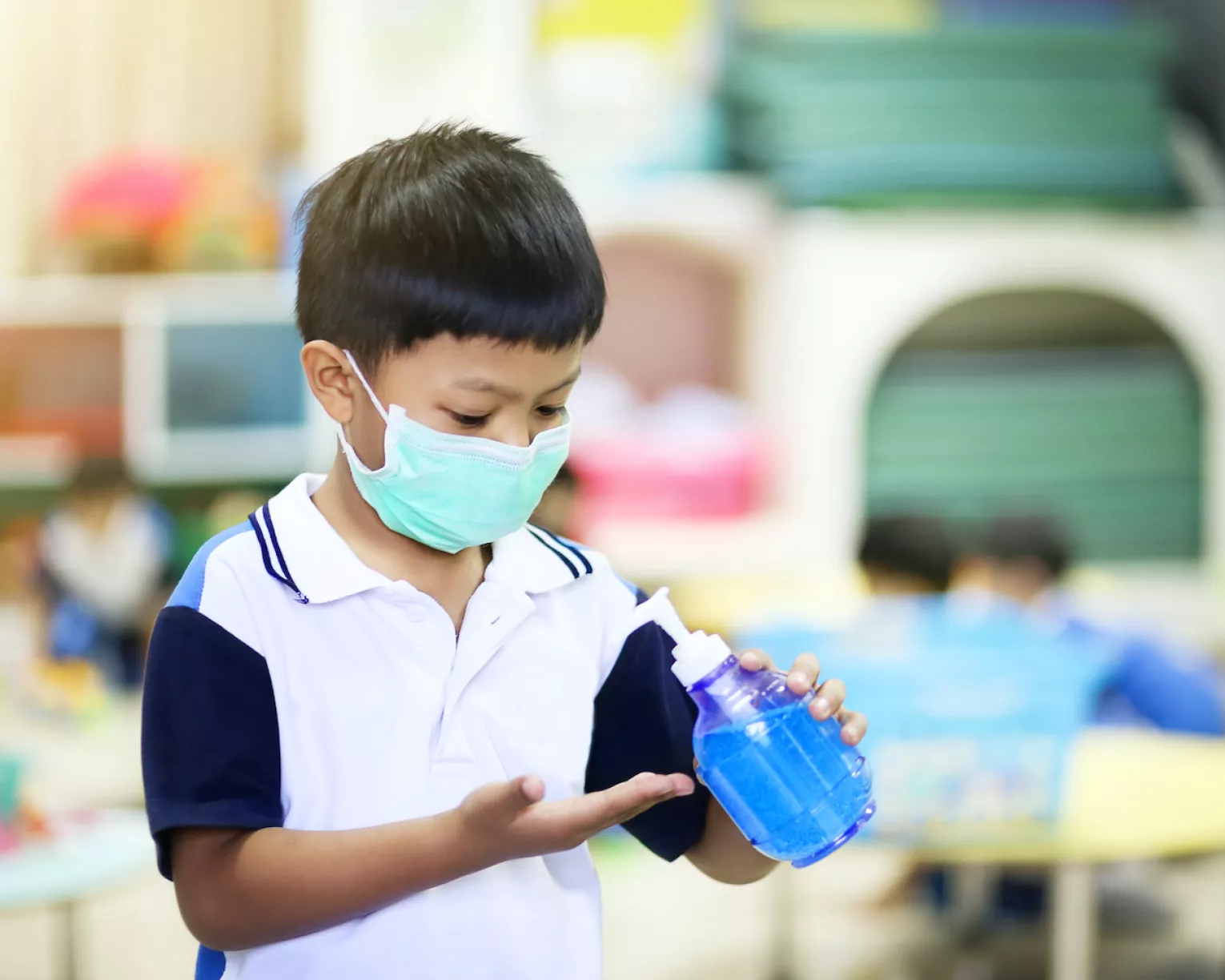ESTABLISH A CLEANING AND DISINFECTION PLAN.*
CDC and the U.S. Environmental Protection Agency (EPA) state that schools should do the following: “Develop your plan. Implement your plan. Maintain and revise your plan.” The National Education Association’s document, Cleaning and Disinfecting in the COVID-19 Era, describes what issues should be addressed in any plan.
- Product selection: The criteria used to determine which products will be used for which applications.
- Practices and processes: Approaches to cleaning and disinfecting high-touch points and high-risk areas—like nurses’ offices—and the proper use, dilution, and storage of products, including minimizing exposure to airborne chemicals.
- Ventilation: The specific requirements for storing, mixing, and using chemicals.
- Availability of hazard information: Identification of the warnings, limitations on use, and safety requirements for the chemicals being used, including access to Safety Data Sheets (SDSs).
- Personal protective equipment: Needs, uses, training, and fit of equipment to keep staff safe.
- Factors specific to the population and purpose of rooms and areas: Guidance on what to do if surfaces are hard or soft, are used for eating or preparing food, or must be treated in between classes.
- Health concerns for specific populations: Considerations for students and educators who, for example, have asthma, which can be triggered by disinfectants and perfumed cleaners; use of products that are independently certified to contain fewer harmful chemicals, like those certified by Cradle to Cradle (silver or gold levels), Green Seal, or Safer Choice (an EPA logo).
You can also check out CDC’s Guidance for Cleaning and Disinfecting Public Spaces, Workplaces, Businesses, Schools, and Homes.
UNDERSTAND WHEN TO CLEAN AND WHEN TO DISINFECT.*
CDC recommends specific protocols for disinfecting spaces that have been occupied by someone who is sick or has a COVID-19 diagnosis. Any space used by an infected person should be closed off and should not be used until it has been cleaned and disinfected. A 24-hour waiting period (or as long as possible if 24 hours is not feasible) should take place prior to cleaning.
For routine cleaning, too many schools rely on harsh disinfectants when common cleaners would be sufficient. CDC and the EPA state: “Most surfaces and objects will just need normal routine cleaning. Frequent disinfection of surfaces and objects touched by multiple people is important.” This includes playground equipment, door handles, sink handles, toilets, inside school buses, and drinking fountains. When choosing a disinfectant, use the EPA’s List N: Disinfectants for Coronavirus (COVID-19), but make sure to use less harsh chemicals and approaches when possible.
For more information, review the CDC guidance and ED Handbook.
HOW TO CREATE SAFE, JUST & HEALTHY SCHOOLS
Ensuring our school communities are safe, just, and healthy places to learn not only protects us from the spread of COVID-19 but also helps us improve school conditions so that our students, educators, and staff—whether Black, brown, or white, Native or newcomer—can thrive. Together, we can advocate for the schools our students, educators, and communities deserve.
Our students, families, and neighborhoods are stronger, safer, and healthier when we come together to overcome shared challenges and develop collective solutions, but we need policymakers to address the fact that many schools lacked the necessary resources for appropriate cleaning and disinfection even before the pandemic. They must distribute resources to meet the specific needs of each school—a need that will be great in disenfranchised communities—so that our communities are strong and our schools have the resources they need to play their full role in the lives of our children and our communities.
By pulling together to demand safe, fully resourced schools, we can prevent unnecessary illness and save countless lives. To accomplish this goal, school leaders must create and implement cleaning and disinfection plans and processes that prioritize the health and safety of the entire school community. If not done safely, disinfecting in schools can make respiratory conditions, such as asthma, worse.
NEA MEMBERS: ACT NOW
Coordinate with your local association to ensure collective bargaining agreements (CBAs) are followed or revisions are negotiated, as needed, to address cleaning and disinfecting practices, including access to cleaning and disinfecting plans, training, protective equipment, product information, and emergency procedures.
If you are not covered by a CBA, seek opportunities to work with school administrators to ensure steps outlined here are adopted. In either case, make sure that educators are included in the development, implementation, and review of COVID-19 responses.
Contact your state-elected officials and district leaders and demand that your school receives the necessary funding for health and safety materials and training. CDC advises that schools must have necessary supplies and training as part of this key mitigation strategy.
Share this guidance with your fellow educators and school leaders.
*Based on CDC guidance and ED Handbook.
Join Our Movement


